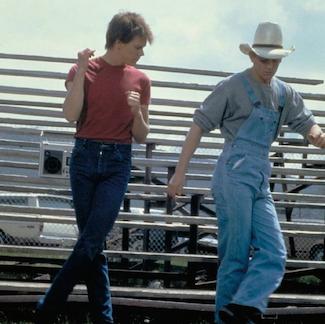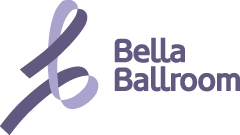Finding the Beat in Ballroom Dancing – Orange County Dance Lessons
Finding the Beat in Ballroom Dancing – Orange County Dance Lessons

From the movie, “Footloose.”
It is one thing to know the basics and dance moves to a certain type of dance, but it is a whole other skill to hear the beat. To some people, hearing the beat comes naturally while to others it seems like a completely foreign thing and is impossible to pick out. Let me give you some types to help you hear the beat and discover how to keep to that rhythm.
1. Most beats are found through the percussion
The beat is referring to the timing in which you do your basic for said dance that you are learning. When listening to a song and trying to find the beat, you want to listen to the strongest sounds, which are holding the song in place. Usually that is the percussion, or drums. In most forms of music you can hear a drum beat that keeps the time. In some forms of music, such as certain latin styles, there is a conga drum beat that holds the time. In blues music they tend to use brushes. In pop music, the beat tends to be kept by an underlying bass line. No matter what type of music you are dancing to, the easiest way to find the beat is through whichever form of drum is being used in the music.
2. Keeping time
Each dance has a different timing. For example, waltz is a 1-2-3 timing while salsa is 1-2-3, 5-6-7. Before you get really confused, let me get to the point. Each dance has a different beat to stick to depending on what the basic is. If you count to the beat, it is easier to stay on it once you have found it. Once you can hear the drum beat, count to it in the counts of whatever your dance style is. If it is waltz, once you find the beat, count 1-2-3, 1-2-3. For an easy exercise, start with counting to 8. Find that drum beat and just count evenly to 8 over and over again trying to stay with that drum.
3. Think of clapping to the rhythm
If you have any sense of the beat when you are listening to music, you are probably able to clap to it. If you are able to do this, you are already on your way. Try clapping to that 8 count. Or if you can hear the beat, try to do your basic in your dance to your clapping. You can do the same thing by snapping if you like as well. If you struggle with clapping, I guarantee finding that 8 count will help you get started.
4. If it is too fast or too slow, it is not the right dance
If you are trying to find music to practice your dancing to, the more you know the beat, the easier it will be to know if the songs you are practicing to actually go with the styles you are learning. This is most applicable in different latin styles. Just because a song is a latin song, it doesn’t automatically mean that it is a salsa. It could be a cha cha, a bachata, etc. If the song feels way too fast for the style you are learning, it might not belong to that style. It might actually be a different style altogether. Same goes for if the song feels way too slow. It might also not belong to that style. The better you get at your dances, the more you will be able to move to different speeds, and you will discover whether or not it is just fast because you are still learning, or it is too fast in general and must belong to a different style of dancing. All that said, when figuring out what to practice to, try to find a song that matches the tempo (speed) that you use when you are learning in class time. Feel free to ask your instructors for help with this.
5. Listen to all forms of music and practice!
Listen to every kind of music. Even if you don’t plan on dancing to it, it can still help you to be able to hear the beat. Listen to everything and practice that clapping and counting exercise. The more music you listen to and the more you practice this skill, you more likely you are to find the beat, stay on it and know the differences.
Now that you have the tools to find that beat, give it a shot! Good luck and happy dancing!
– Bella Ballroom Dance Studio Instructor, Tayler

